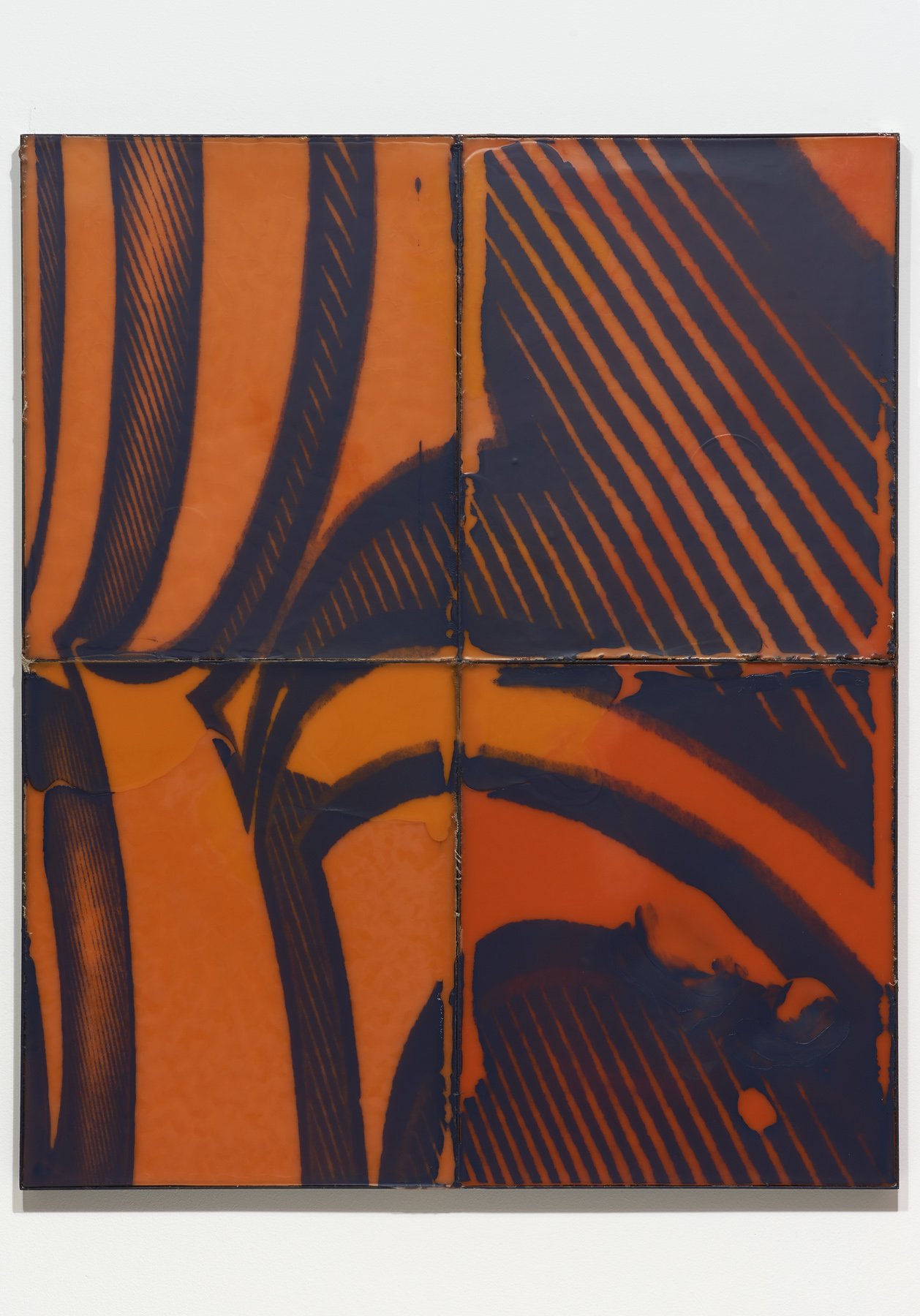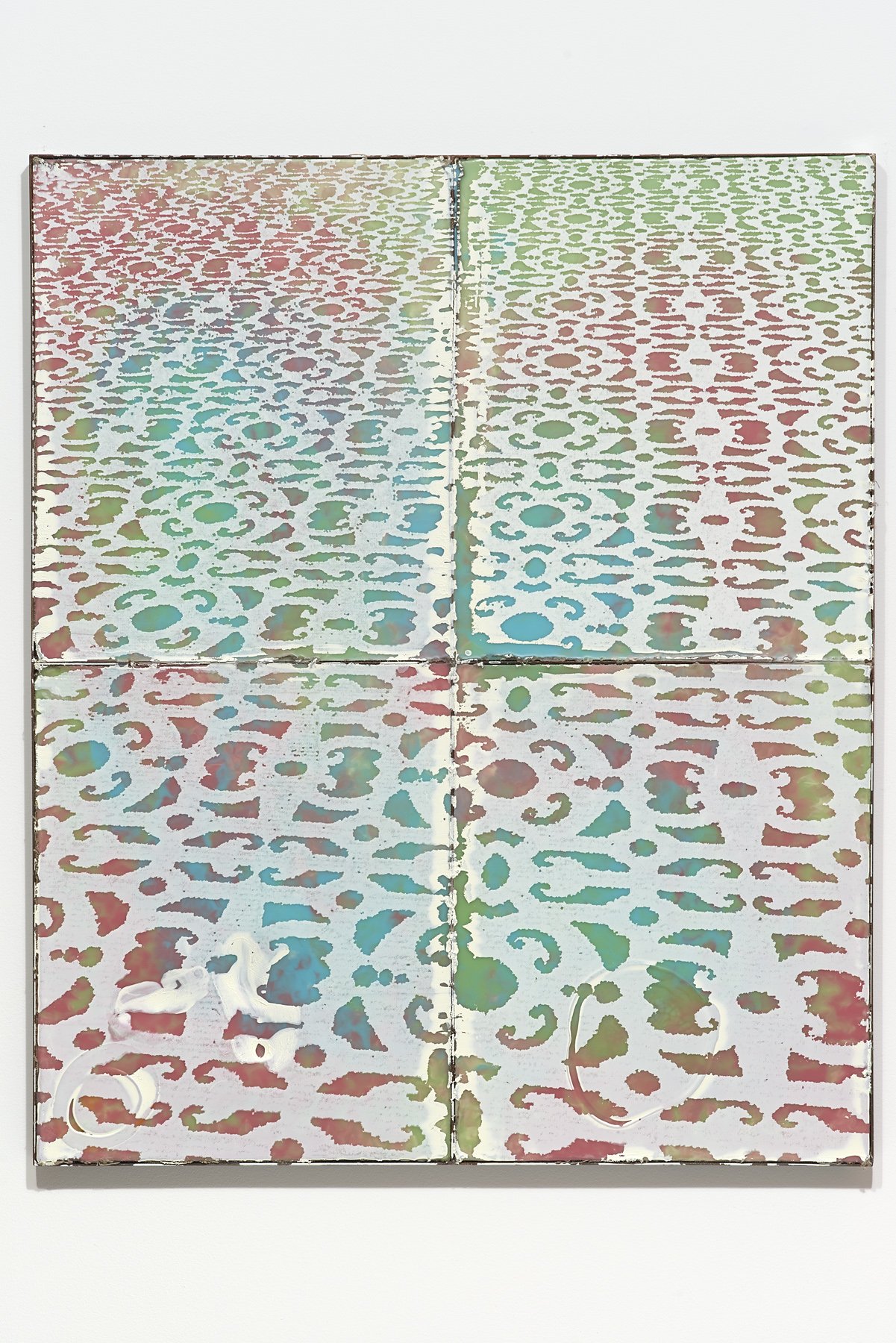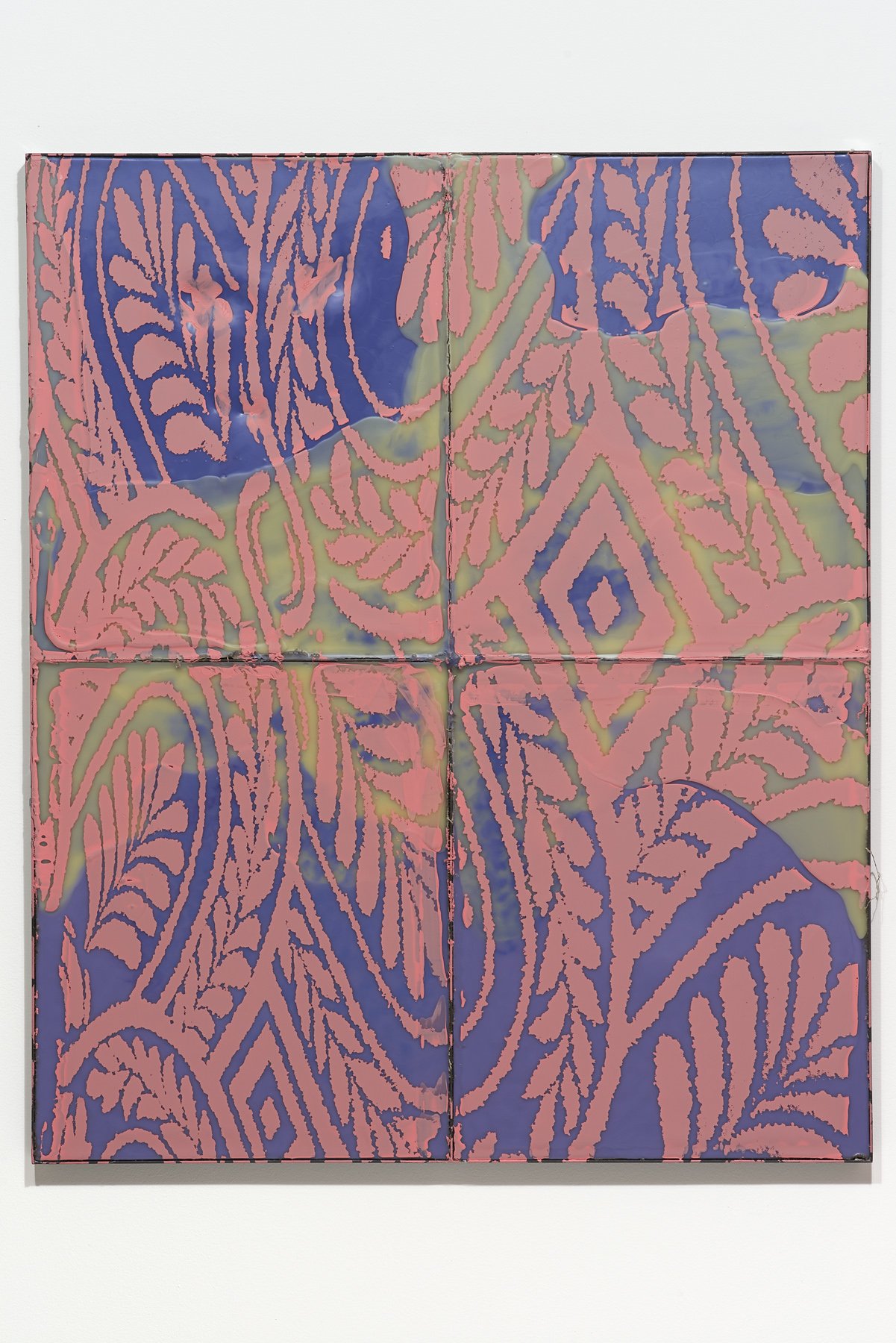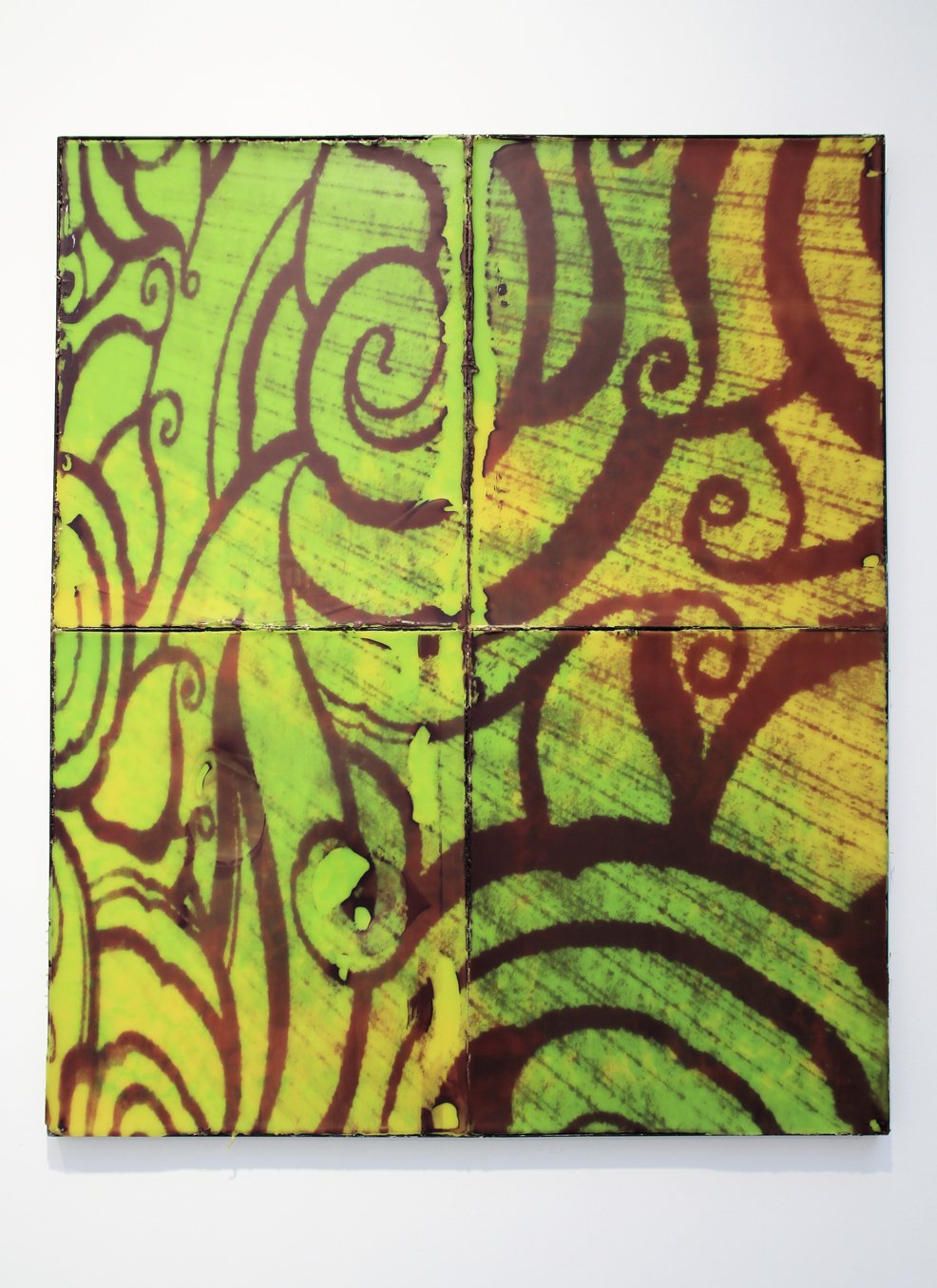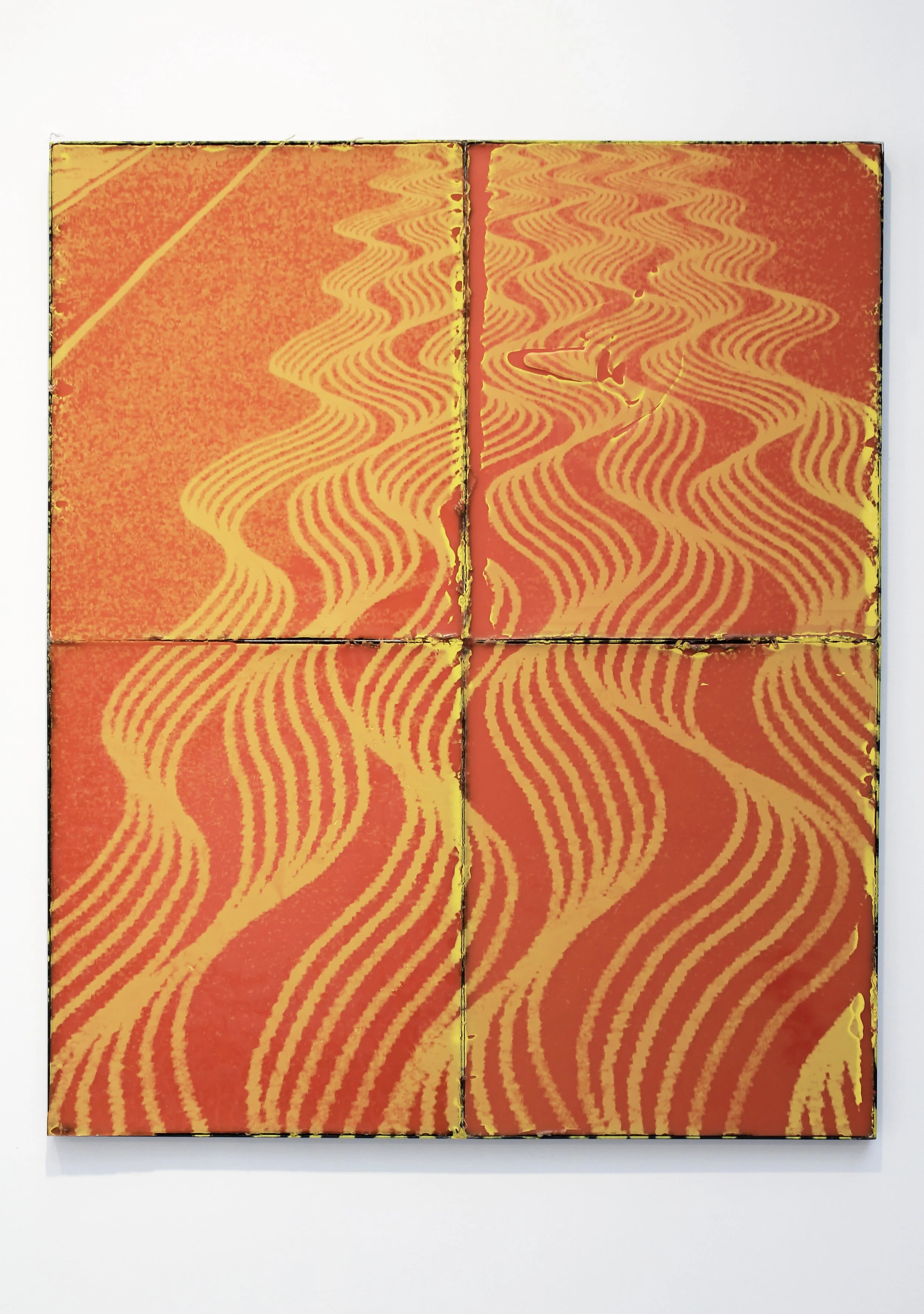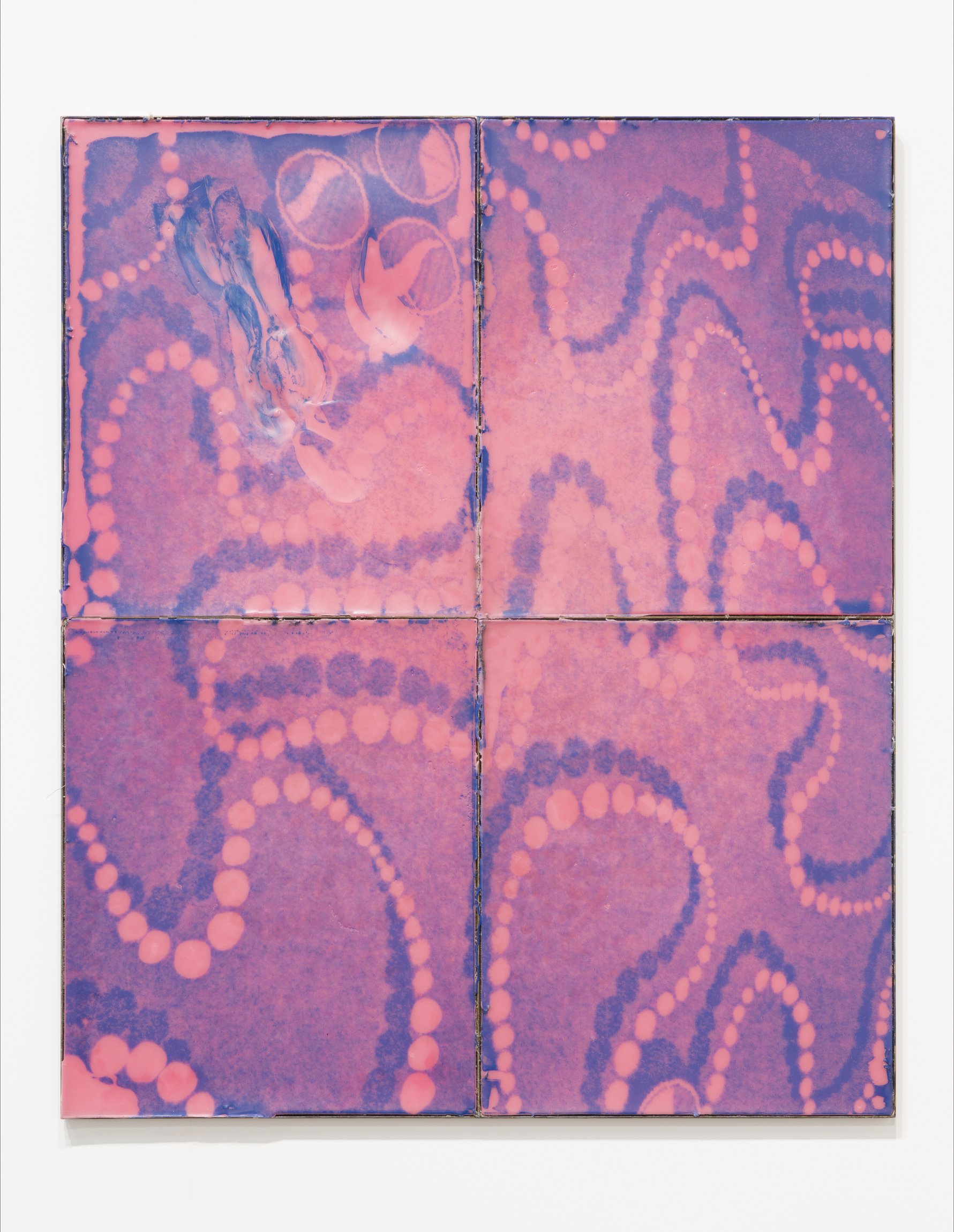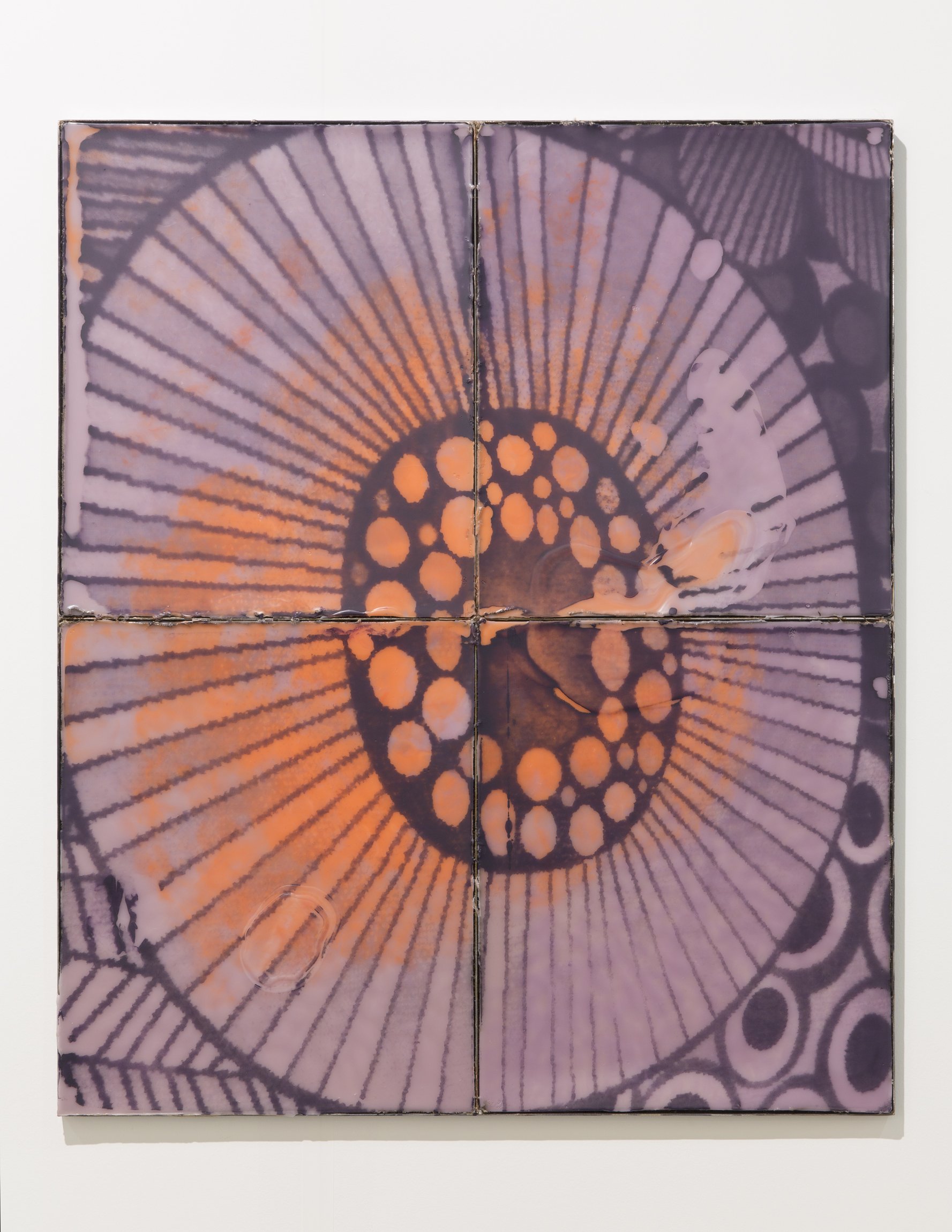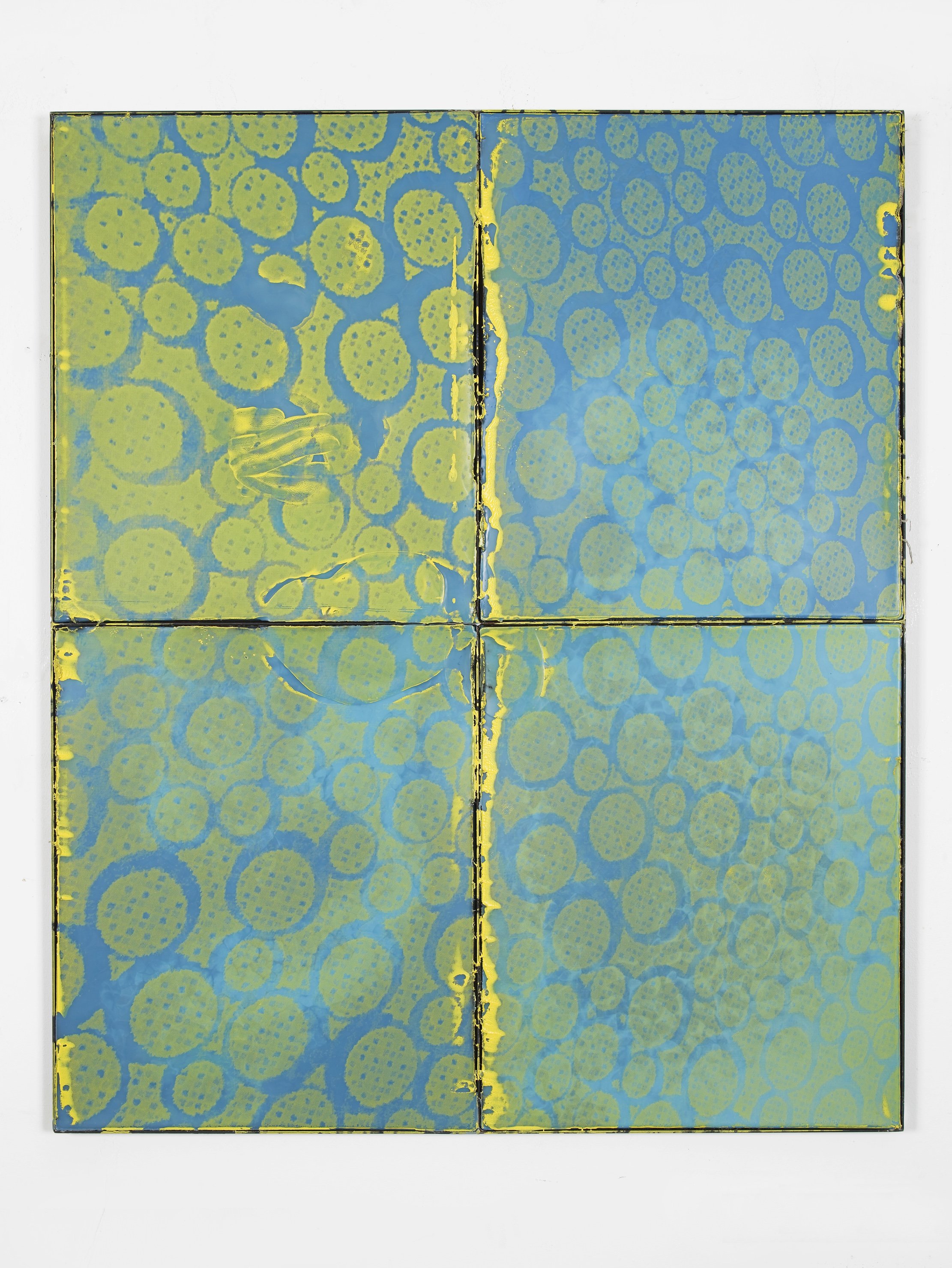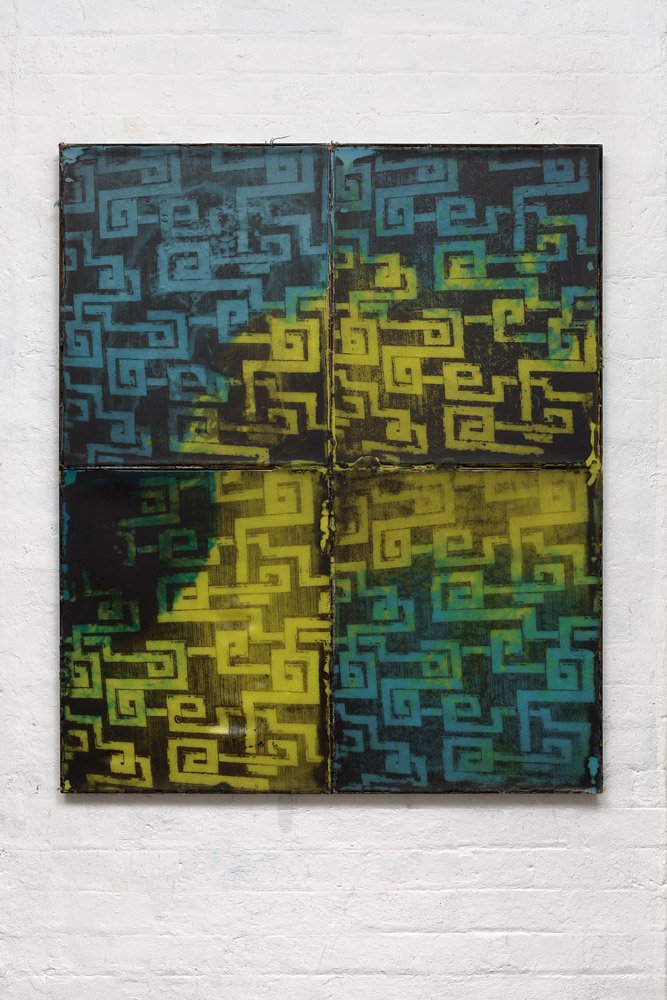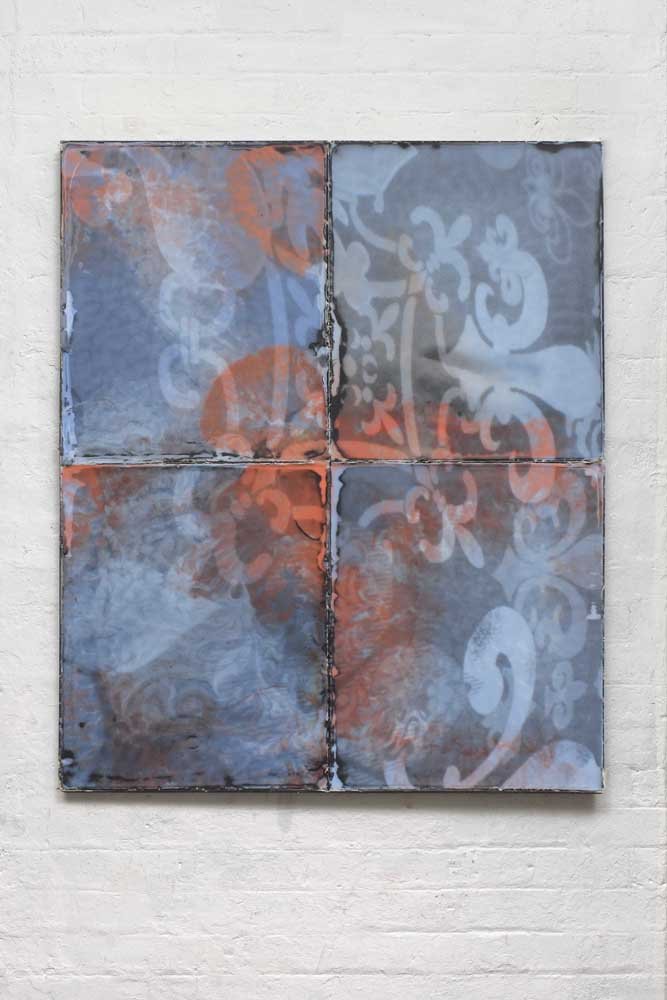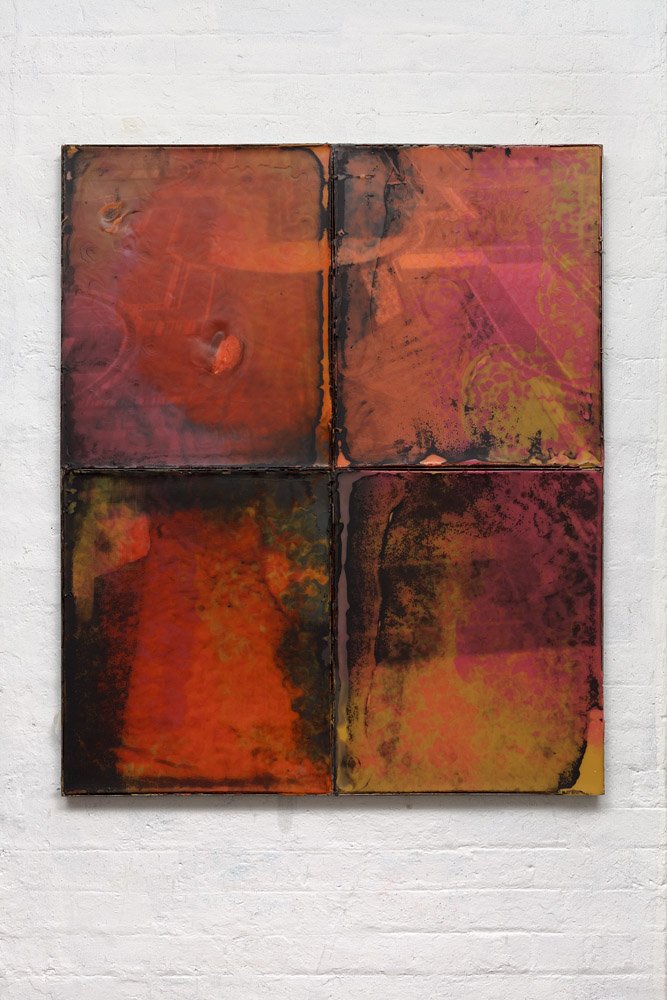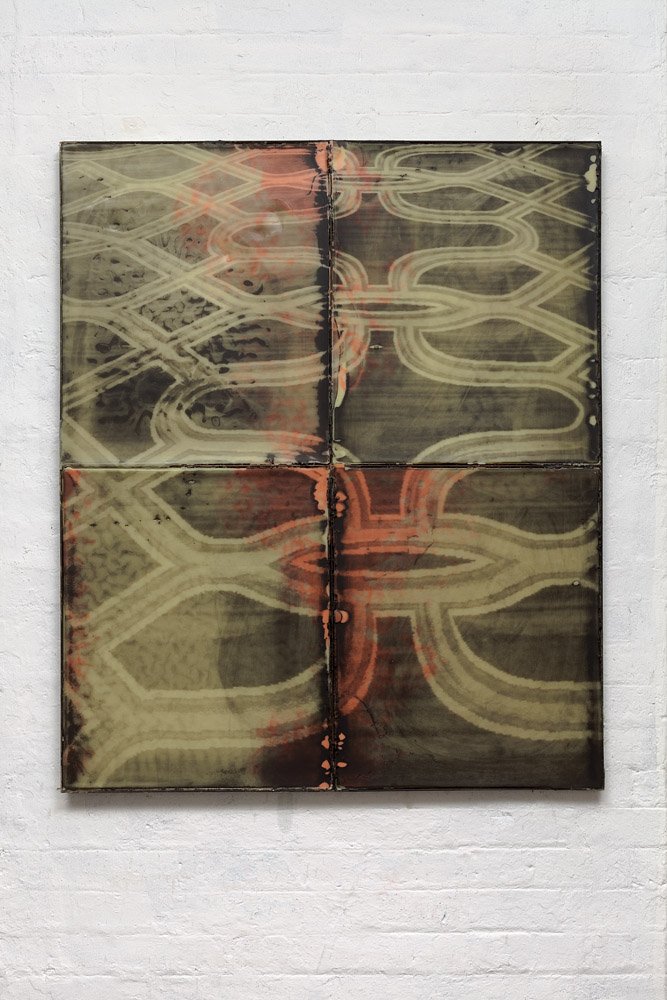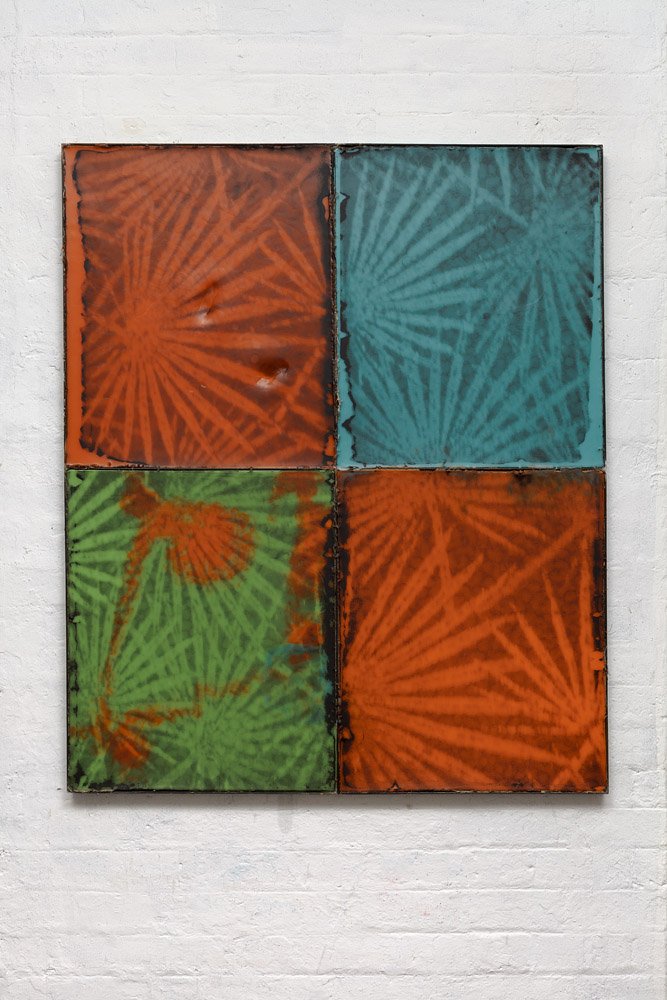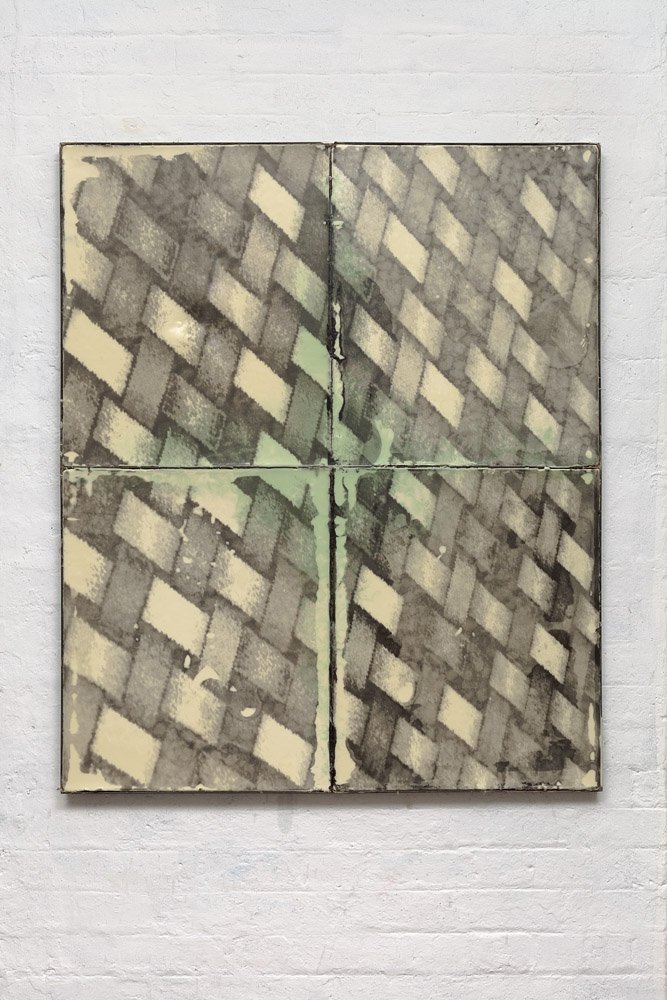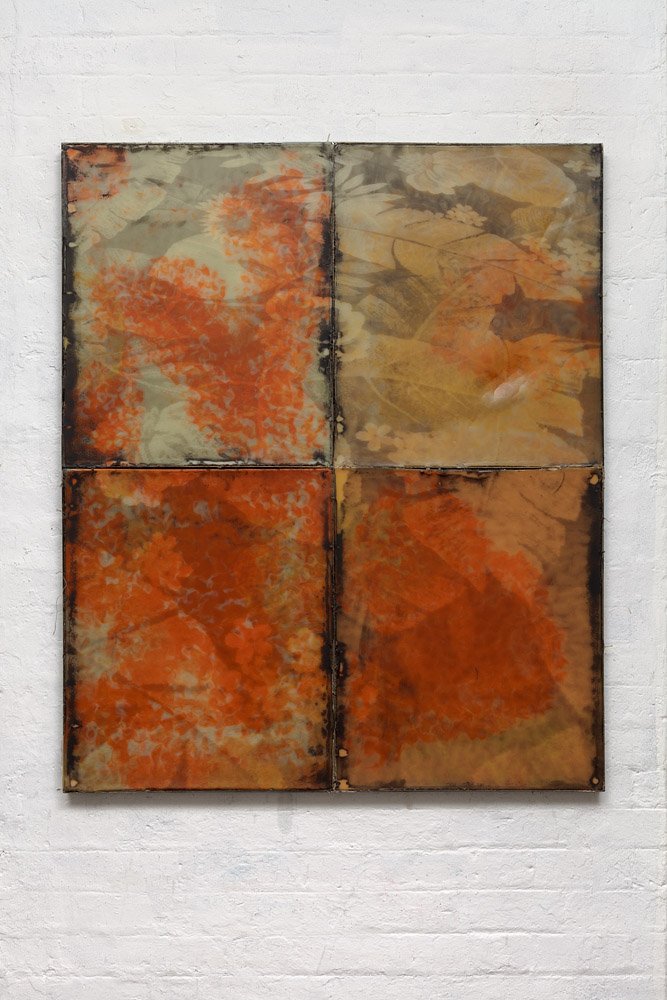Gate Control Theory
In their 1965 "Gate Control Theory of Pain," Melzack and Wall proposed that pain could be reduced by competing stimuli, such as pressure or cold, which travel through the nervous system faster than pain signals. This interference effectively "closes the gate" to pain before it reaches the brain. In this context, massage therapy (MT), when applied with sufficient pressure, creates a competing stimulus that blocks pain transmission.
Ruairiadh O’Connell explores this theory through a series of silkscreens on coloured wax, applying the concept of MT to the psychological function of casino carpet design. The bold, chaotic patterns of casino carpets are designed to keep gamblers alert and engaged, encouraging them to stay and spend more.
Inspired by this, the artwork features wax paintings derived from these patterns, manipulated through various MT techniques; rubbing, kneading, and tapping. These interventions aim to offer a moment of relaxation or relief, much like the role of an MC in a boxing match or a tool warming up the audience.

